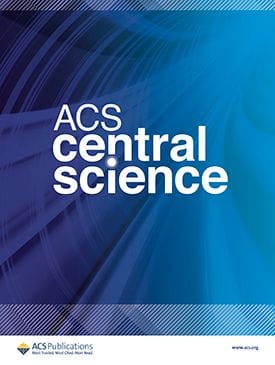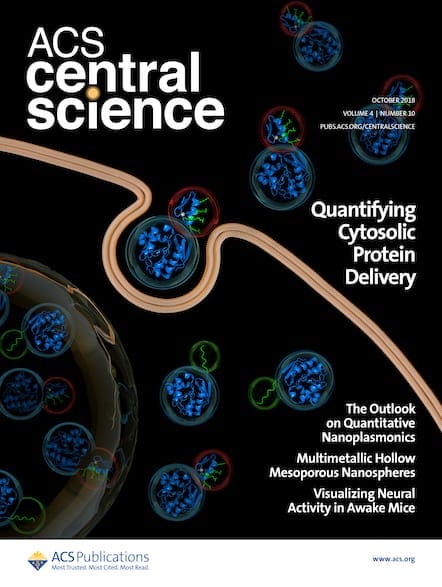A new study reports on a drug candidate that, after a single dose, successfully induced complete or near-complete regression of breast tumors in mice without severe side effects.

Breast cancer is the second-leading cause of cancer-related mortality in women, resulting in 670,000 deaths every year.1 Additionally, around 70% of female breast cancers are estrogen receptor alpha positive (ERα+), where estrogen ultimately promotes survival and growth of the cancer cells.2,3 In combination with surgery, the core pharmacological options for ERα+ breast cancer are endocrine therapies that target estrogen synthesis or ERα-mediated transcriptional activity. But there remains a critical need for new treatments for late-stage breast cancer, where the median survival is just three years.4 Ideally, such therapies would be effective against recurrent and refractory disease with minimal dosing—an important consideration since patients are currently required to take some of these medications for up to 10 years following surgery.5 This long-term endocrine therapy is associated with side effects that can significantly impact quality of life, resulting in up to 30% discontinuing treatment. Furthermore, as many as one in two women will still progress to advanced breast cancer and disease that is resistant to current treatments.5,6 Of note, tumors resistant to endocrine therapy typically maintain ERα expression, suggesting a therapeutic opportunity through leveraging ERα expression.7
Now, new work published in ACS Central Science reports on a new pre-clinical option that induces tumor regression with just a single dose.8 ErSO is a small molecule that dysregulates cation homeostasis in ERα+ breast cancer cells, leading to swelling and necrotic death.9,10 The team previously discovered this compound as part of a medicinal chemistry campaign to identify anticipatory unfolded protein response (a-UPR) hyperactivators that were potent inducers of breast cancer cell death.9 At its core, ErSO acts through ERα to elicit strong and sustained cytotoxic activation of the a-UPR. Unlike current therapies that are largely cytostatic, ErSO does not compete with estrogens for binding to Erα, and selectively kills ERα-positive breast cancer cells—including those harboring known resistance mutations.7

Single Dose of a Small Molecule Leads to Complete Regressions of Large Breast Tumors in Mice
DOI: 10.1021/acscentsci.4c01628
Previous assessment in mouse models showed impressive tumor regression—and in some cases complete tumor eradication—for both ErSO and a next-generation derivative called ErSO-DFP.7,9 In the new study, the team looked at ErSO-TFPy, a compound with enhanced anticancer potency and selectivity.8 Unlike ErSO, ErSO-TFPy is tolerated in rodents at high doses, which allows massive regression of large tumors after a single dose. The authors note that if this could be replicated in humans, it would revolutionize ERα+ breast cancer management.
In their wider work around ErSO, members of this team have also worked to better understand the molecular drivers behind anticancer therapy-induced necrosis, a type of cell death that also activates the immune system.10 They used a CRISPR-Cas9 screen to identify genes involved in this process and found that a protein called TRPM4 is a crucial component. When cancer cells were treated with drugs such as ErSO, those resistant to the treatment had lower levels of TRPM4—but reintroducing the protein restored sensitivity to ErSO and similar drugs by helping sustain lethal a-UPR hyperactivation.10 In summary, their findings reveal that TRPM4 is essential for sustaining the a-UPR and the anticancer effects of necrosis-inducing therapies, making it a potential target for enhancing cancer immunotherapy.
Browse Related Articles in ACS Journals
Explore a selection of additional breast cancer research recently published in ACS journals, covering topics such as biomarkers, sensors, treatments, and more.
Hyaluronic Acid-Targeted Niosomes for Effective Breast Cancer Chemostarvation Therapy
Masoumeh Kaveh Zenjanab, Elaheh Dalir Abdolahinia, Effat Alizadeh, Hamed Hamishehkar, Rasoul Shahbazi, Zahra Ranjbar-Navazi, Rana Jahanban-Esfahlan*, Marziyeh Fathi*, and Seyed Abolghasem Mohammadi*
DOI: 10.1021/acsomega.3c09782
Dual-microRNA-Controlled Electrochemiluminescence Biosensor for Breast Cancer Diagnosis and Supplemental Identification of Breast Cancer Metastasis
Zhuoxin Ye, Mo Ma, Yuxuan Chen, Ruiyan Liu, Yan Zhang, Pinyi Ma*, and Daqian Song*
DOI: 10.1021/acs.analchem.3c05766
Iron Oxide Nanoparticles Inhibit Tumor Progression and Suppress Lung Metastases in Mouse Models of Breast Cancer
Preethi Korangath, Lu Jin, Chun-Ting Yang, Sean Healy, Xin Guo, Suqi Ke, Cordula Grüttner, Chen Hu, Kathleen Gabrielson, Jeremy Foote, Robert Clarke, and Robert Ivkov*
DOI: 10.1021/acsnano.3c12064
Proximity-Guaranteed DNA Machine for Accurate Identification of Breast Cancer Extracellular Vesicles
Shuang Yang, Liang Zhou, Zhikai Fang, Ying Wang, Guozhang Zhou, Xi Jin*, Ya Cao*, and Jing Zhao*
DOI: 0.1021/acssensors.4c00491
Stimuli-Responsive Hydrogels Potentiating Photothermal Therapy against Cancer Stem Cell–Induced Breast Cancer Metastasis
Tianfu Zhang*, Wei Ping, Meng Suo, You Pan, Rong Huang, Jingqi Chen, Meng Lyu, Ni Zhang*, Shipeng Ning*, and Ben Zhong Tang*
DOI: 10.1021/acsnano.4c04067
A POSS-Based Metal-Phenolic Network with Coupled Hardness and Softness for Photodynamic-Immunotherapy of Triple-Negative Breast Cancer
Wei Wang, Luanfeng Liao, Yun Huang, Yuqi Zhao, Longtianyang Lei, Zhenghao Tao, Jinyan Zhang, Dongdong Peng, Jie-Qiong Wang, Cui-Yun Yu*, and Hua Wei*
DOI: 10.1021/acsmaterialslett.4c00661
Alginate-Chitosan Biodegradable and Biocompatible Based Hydrogel for Breast Cancer Immunotherapy and Diagnosis: A Comprehensive Review
Pratikshya Patra, Tarun Kumar Upadhyay*, Nawaf Alshammari, Mohd Saeed*, and Kavindra Kumar Kesari*
DOI: 10.1021/acsabm.3c00984
Plant-Derived Anti-Human Epidermal Growth Factor Receptor 2 Antibody Suppresses Trastuzumab-Resistant Breast Cancer with Enhanced Nanoscale Binding
Chanyong Park, Kibum Kim, Yerin Kim, Rong Zhu, Lisa Hain, Hannah Seferovic, Min-Hyeok Kim, Hyun Joo Woo, Hyunju Hwang, Seung Ho Lee, Sangmin Kim, Jeong Eon Lee, Peter Hinterdorfer, Kisung Ko*, Sungsu Park*, and Yoo Jin Oh*
DOI: 10.1021/acsnano.4c00360
Novel Chitosan-Coated Liposomes Coloaded with Exemestane and Genistein for an Effective Breast Cancer Therapy
Shwetakshi Sharma, Priya Gupta, S. M. Kawish, Shahnawaz Ahmad, Zeenat Iqbal, Divya Vohora*, and Kanchan Kohli*
DOI: 10.1021/acsomega.3c09948
Celecoxib Augments Paclitaxel-Induced Immunogenic Cell Death in Triple-Negative Breast Cancer
Xiaohui Qian, Huang Yang, Ziqiang Ye, Bingqiang Gao, Zhefeng Qian, Yuan Ding*, Zhengwei Mao*, Yang Du*, and Weilin Wang*
DOI: 10.1021/acsnano.4c02947
Mechanistic Investigation of Thiazole-Based Pyruvate Kinase M2 Inhibitor Causing Tumor Regression in Triple-Negative Breast Cancer
Rudradip Das, Priyanka Pulugu, Aditya A. Singh, Deep Rohan Chatterjee, Shraddha Baviskar, Het Vyas, Santosh Kumar Behera, Akshay Srivastava*, Hemant Kumar*, and Amit Shard*
DOI: 10.1021/acs.jmedchem.3c01512
References
- Worldwide cancer statistics. Cancer Research UK 2025.
- Yue, W. et al. Effects of estrogen on breast cancer development: Role of estrogen receptor independent mechanisms. Int. J. Cancer 2010, 127 (8), 1748–1757.
- Wang, C. et al. Estrogen induces c-myc gene expression via an upstream enhancer activated by the estrogen receptor and the AP-1 transcription factor. Mol. Endocrinol. 2011, 25 (9), 1527–1538.
- Cardoso, F. et al. Global analysis of advanced/metastatic breast cancer: Decade report (2005–2015). Breast 2018, 39, 131–138.
- Franzoi, M. A. et al. Evidence-based approaches for the management of side-effects of adjuvant endocrine therapy in patients with breast cancer. Lancet Oncol 2021, 22 (7), e303–e313.
- Ziller, V. et al. Adherence to adjuvant endocrine therapy in postmenopausal women with breast cancer. Ann. Oncol 2009, 20 (3), 431–436.
- Boudreau, M. W. et al. Activators of the Anticipatory Unfolded Protein Response with Enhanced Selectivity for Estrogen Receptor Positive Breast Cancer. J. Med. Chem. 2022, 65 (5), 3894–3912.
- Mulligan, M. P. et al. Single Dose of a Small Molecule Leads to Complete Regressions of Large Breast Tumors in Mice. ACS Cent. Sci. 2025 (ASAP).
- Boudreau, M. W. et al. A small-molecule activator of the unfolded protein response eradicates human breast tumors in mice. Sci. Transl. Med. 2021, 13 (603).
- Ghosh, S. et al. Plasma Membrane Channel TRPM4Mediates Immunogenic Therapy-Induced Necrosis. Cancer Res. 2023, 83 (18), 3115–3130.
